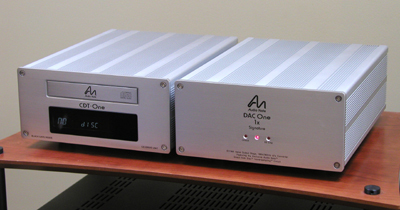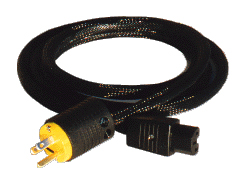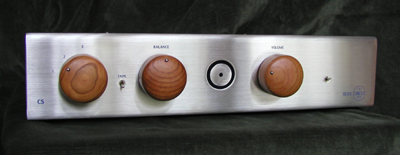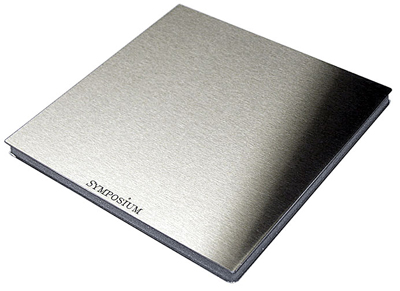|
You are reading the older HTML site
Positive Feedback ISSUE
10 Go Lower: Musical Pleasure From a "Modest" High End System by Audio Note, Blue Circle, and JM Reynaud, with assists from TG Audio and Symposium by Bob Neill
One of my longest unattended projects since becoming a reviewer and gaining access to a variety of components has been to assemble—for my own pleasure and that of my un-rich friends—a recommendable high end system with a list price of under $10,000. I understand that for a great many audiophiles, even this figure is far from modest. Perhaps by next year I can get the figure lower, but I will need to come down slowly. I have imagined a system that is so good at the musical ABCs of audio that it leaves its happy owners absolutely untempted by the Dark Valley of Upgrades. I was not sure this was possible until, a year or so ago, I heard the Reynaud Twins III and Blue Circle CS integrated amp together, and even then I despaired at finding a sufficiently satisfying, refined, and unaffected digital front end that could fit into the budget I had in mind. When I heard the Audio Note CDT TWO/DAC 4.1 balanced two months ago, my dream tentatively revived. Perhaps a company that could do that for $14,500 with a fairly straightforward, almost retro audio design could do something worthwhile for around $3000.
The Audio Note CDT ONE and DAC ONE.1x Signature (zero feedback, tube output, no surprises there!) arrived last week, were hooked up to my Blue Circle CS and a pair of floorstanding Twins III known as Arpeggiones, and we were off. Both Peter Qvortrup and Dave Cope recommended this front end as the best value from the AN stable for an under-$10,000 system. Both feel that the combination delivers considerably better performance than the CD 3.1 integrated player for not a whole lot more, despite the need for an interconnect (price of the pair with .75 meter interconnect, $3204).
I am not a patient audiophile, so while waiting for the 688s to arrive from Houston, I foolishly plugged in one of my EPS Signatures ($1500) in order to find out if power was really the problem. I immediately heard what I had hoped for—a superbly balanced and utterly natural sounding system without a trace of strain. Obtaining a clean, unfettered supply of power in a modest system is clearly a major concern, so this was a valuable lesson that I pass along. The 688s arrived three days later, and I sat down to listen in earnest. I started out with one 688 on the amp, and immediately heard signs of what I’d heard with the EPS—voices were clearer and richer, both alone and in chorus, the background was quieter, the bottom end had more authority, and there was a clearer sense of space and venue. There was also less refinement, which is fair enough. Refinement is an EPS trademark for which you pay substantial bucks. I figured what the hell, so I put one 688 each on the transport and DAC, and it got better yet. The first jump was the biggest, but at $350 per 688, three were around two-thirds the cost of one EPS Signature. I decided that in a $10K system, a $1050 upgrade that made this much difference was reasonable, so they stayed in and are there still. Don’t ask me if three 688s are as good as or better than one Signature, because I’m not sure I could give you a satisfactory answer. EPS Signatures do refinement as no other cords do. TG cords do some refinement and do everything else extremely well, and the 688s did everything that any rational person could ask. More later.
What I want in a modest high end system is a presentation that engages me with the music in a way that also does justice to the those audio characteristics we all come to the high end for—accuracy of timbre, natural warmth without loss of clarity, and the combination of smoothness and expressiveness we associate with live performance. To achieve this, you need system balance, with a consistent level of excellence throughout the system and no component getting ahead of the others. I do not look for "live" dynamics, scale, bottom-to-top reach, and a dramatic sense of venue. The goal is an excellent facsimile, not absolute verisimilitude, and this was what this wonderful little system was delivering. Listening Beethoven, Mass in C Minor, Hickox and the Collegium 90 (Chandos). Solo voices are clear and eloquent. The full chorus is unstrained, credibly weighty, lovely. Massed strings are clear and smooth. Solo strings—here a viola, there a cello—are woody and very fine. Am I pulling punches here, right at the start? Am I conscious of having lowered expectations? No, and not really. What I’m hearing does not bring to mind what I’m not hearing—that is, ultra resolution, great low-end authority, brilliance, power, and dynamics. This is the goal in building a modest system, isn’t it? This system also has a remarkable sense of touch, especially noticeable in quiet passages. That I did not expect. Again that is clearly the gift of the front end, but it takes the rest of the system to sustain it. All it would take would be some response peakiness here, a little muddiness there, and it would be lost. It is not lost. Buddy Guy, Slippin’ In (Silvertone). Another wonderful surprise. The system rocks like a bandit. Here the balance I am shooting for is especially evident. Electric guitar, Guy’s voice, and percussion give plenty of opportunities for the dogs to get out of line, but everything stays where it belongs and Guy’s voice is clear and quite sufficiently present. A superb recording done great justice. A reference system would get more screaming brilliance from the guitar, a clearer snap and more authority from the drums, and it would project Guy’s voice more, resulting in a more dynamic and "present" performance. That is what I got from mine later in the day, but listening to what this little system offered—heresy, oh heresy—it just didn’t matter. I can’t believe I got the synergy so right, though this system has been percolating ‘round my brain for quite a while. Would some other gear do as well? Who knows? If you really work on it, quite possibly. There’s plenty of gear I haven’t heard, but in my experience so far, synergistic systems for under $10,000 that sound this good are as much like grails as the biggies. And CD players that behave and don’t bore for $3000 are equally rare. JS Bach, Sonatas for Violin and Harpsichord, Huggett and Koopman (Philips). One of my favorite tests for how well a system can resolve is how soon in Sonata No. 1, the violin, which gradually emerges from "behind" the harpsichord, is audible as a separate voice. In this system, I heard it almost immediately! And this is in a system notable for overall warmth and balance rather than proficiency in detail. On my reference system, Huggett’s baroque violin is more piercing and Koopman’s harpsichord more riveting and resonant—that is, dramatic and exciting—but the longer I listen to the performance here, the more the missing elements strike me as more sonic than musical. That is not to say they don’t matter, especially not for me me to say with my fancy-schmancy reference system, but it is to ask, how much? A related point—one of the critical tricks in designing a system like this is managing the treble skillfully. Virtually every modest system on which I’ve heard this particular recording fails to do this, and sounds either bright and thin or cloyingly cosy. Haydn, String Quartets Opus 64, 1,3,6. Mosaics Quartet (Astree). At this point, I found myself smiling. I love the Mosaics Quartet, especially their Mozart and their Haydn, and while I didn’t ask this system to transport me with the finesse and refinement that my reference system delivers from this group, it was gratifying to hear what it could do. What a more highly resolving (but less than reference-level) system often does with the Mosaics is get more of the tang of their eighteenth century instruments but not their warmth, without which the tang is just that. So while we hear more, we get less, with less musical pleasure. You have to get it all or you have to aim (skillfully) for a little less and bingo, more pleasure arrives. What is frightening about listening to this system—Backwoods Barry has warned me about this for several years now with insidious intent—is that it is making me happy. I like it. I’d love, but don’t particularly miss, what’s missing. And it costs around one-eighth the price of my reference system! Interlude At some point in this review, I had hoped to be able to dole out appropriate credit to each of the components in the system, but aside from noting the Audio Note front end’s sense of touch, I’m having trouble doing this. The Audio Note is the first digital front end I’ve heard at this price point that can do all that this one does. The others I know are too bold, too dull, or too flirty.
The CS amp, which I’ve heard driving a variety of modest (and a few immodest) speakers, strikes the usual Blue Circle balance between warmth and clarity, leaning tastefully toward a warmth appropriate for systems whose other components are likely to do likewise. Given a decent power conduit, the CS is the best integrated I’ve heard under $2000. I feel at least a TG Audio 688, if not a SLVR, are essential. (Interesting question: Would a CS with an EPS Signature at a total price of $2650 outperform other circa-$2500 integrated amps?) I’m sure a Bryston B60 or Naim Nait could do a decent job, and if that’s what you like or what you’ve got, work with it, but the CS is the one I know, and its price is almost a joke, even with a SLVR. I also used a modest line conditioner, the Blue Circle MR 800 ($699). The Arpeggiones strike me as having all of the Twins IIIs’ joie de vive and expressiveness but with more body, thanks to their larger transmission line. They are not as tall as Twins on stands, but JMR has put a deflector on the low-mounted tweeter (low mounted because of the transmission line design), and I was not aware of a lowered soundstage or short singers. The tweeter on the Twins and the Offrandes is also mounted below the woofer for the same reason. As with all Reynaud floorstanders, I urge you put them on Symposium Sveltes rather than spikes, which tend to harden their midrange. I understand that JMR himself is working on a similar product. Reality Check To regain credibility with myself and you, I returned to the reference system, and of course, the "Oh my" effect returned. What the little system cannot do is wow you, at least after it has surprised you by exceeding your expectations. You don’t get "wow" for $9100. You don’t get the scale, soundstage, dynamics, ease, and immediacy that together render the illusion of presence. Nor, alas, do you get all the beauty. A truly fine reference system can do beauty in a way that, at least in my system, is the heart of the "Oh my." The difference, when it’s put to the old A/B test, is fairly dramatic, but—and that is what this review is all about—you do get the same wonderfully natural sense of balance, at a more modest level. You get a clear and satisfying analogue of a musical performance, and that is worth a "wow."
The System Interconnects are clearly a matter of taste. I chose Audio Note cable for this system because I am investigating them, and find they complement these components well. Power cords likewise. I used TG Audio because I am familiar with them and consider them the best value. I consider an aftermarket cord for the amplifier essential—and the better, the better. For the transport and DAC, they are probably an indulgence, but at $350 each, maybe not. Buyer’s call, and you can’t lose. Line conditioning is probably not essential, depending on the quality of your AC. I used one because I noticed that, along with the aftermarket AC cords, it provided a noticeable boost in performance at a reasonable cost. I have to say one more time that improving the supply of power to a modest system is where I believe the best return on investment is to be found. The Arpeggiones included here are single-wired versions, no longer available in the U.S. All Twins III and Arpeggiones imported into the U.S. beginning this fall come with taps for bi-wiring. The price listed here is for the bi-wirable speakers. I did not have an opportunity to put a pair of Twins III against the Arpeggiones. My audio memory is not trustworthy over more than a few months, and it’s been over a year since I heard a pair. Furthermore, the Twins were my first substantial exposure to Reynaud and it was ear-opening, so I am doubtless remembering them through rose-colored ear trumpets. Bob Neill Components Audio Note CDT ONE digital transport ($1450) Total system cost: $9118 Audio Note (UK) Ltd. U.S. Distributor: Blue Circle Audio, Inc. Jean Marie Reynaud U.S. Importer: Symposium Acoustics TG Audio Lab Bob Neill is a part-time dealer for Elrod Power Systems, Blue Circle, Audience, TG Audio, and JM Reynaud. Bob may also become a part-time dealer for AN in the near future.
|


 It took me a bit of juggling to get this system cooking, and I’ll confess
that some serious anxiety set in. It sounded okay, but massed choral voices were a real
strain. Not enough power getting to the amp? I placed a phone call to Bob Crump of TG
Audio, who recommended his 688 power cord, which is "exactly like the SLVR except the
connectors are 688 brass instead of 688 brass with silver plating…. In direct
comparison you will find the frequency balance to be just about the same, maybe a touch
sweeter…." They are also $350, rather than $500 for the SLVRs, and a little less
revealing, he added. Done.
It took me a bit of juggling to get this system cooking, and I’ll confess
that some serious anxiety set in. It sounded okay, but massed choral voices were a real
strain. Not enough power getting to the amp? I placed a phone call to Bob Crump of TG
Audio, who recommended his 688 power cord, which is "exactly like the SLVR except the
connectors are 688 brass instead of 688 brass with silver plating…. In direct
comparison you will find the frequency balance to be just about the same, maybe a touch
sweeter…." They are also $350, rather than $500 for the SLVRs, and a little less
revealing, he added. Done. Once
ready to perform, I played the system pretty steadily for a couple of days. The focus of
its musical presentation was on the midrange, as it should be, with a reasonably punchy
low end and a smooth and articulate treble that was sufficiently tapered to sound
pleasingly natural. This was a slightly warmer and fuller version of what I heard when the
Arpeggiones’ little brother Twins were here a year ago on the CS. Most important is
that both speakers have a generous amount of pure joy in their natures. I also heard more
refinement (even without the EPS cord!) than I remembered from the CS/Twins combination,
and knew immediately where that was coming from. My hopeful speculation about the
Audio Note front end was verified: Yes, Elizabeth, you can get an affordable digital front
end with the characteristic Audio Note eloquence.
Once
ready to perform, I played the system pretty steadily for a couple of days. The focus of
its musical presentation was on the midrange, as it should be, with a reasonably punchy
low end and a smooth and articulate treble that was sufficiently tapered to sound
pleasingly natural. This was a slightly warmer and fuller version of what I heard when the
Arpeggiones’ little brother Twins were here a year ago on the CS. Most important is
that both speakers have a generous amount of pure joy in their natures. I also heard more
refinement (even without the EPS cord!) than I remembered from the CS/Twins combination,
and knew immediately where that was coming from. My hopeful speculation about the
Audio Note front end was verified: Yes, Elizabeth, you can get an affordable digital front
end with the characteristic Audio Note eloquence.
